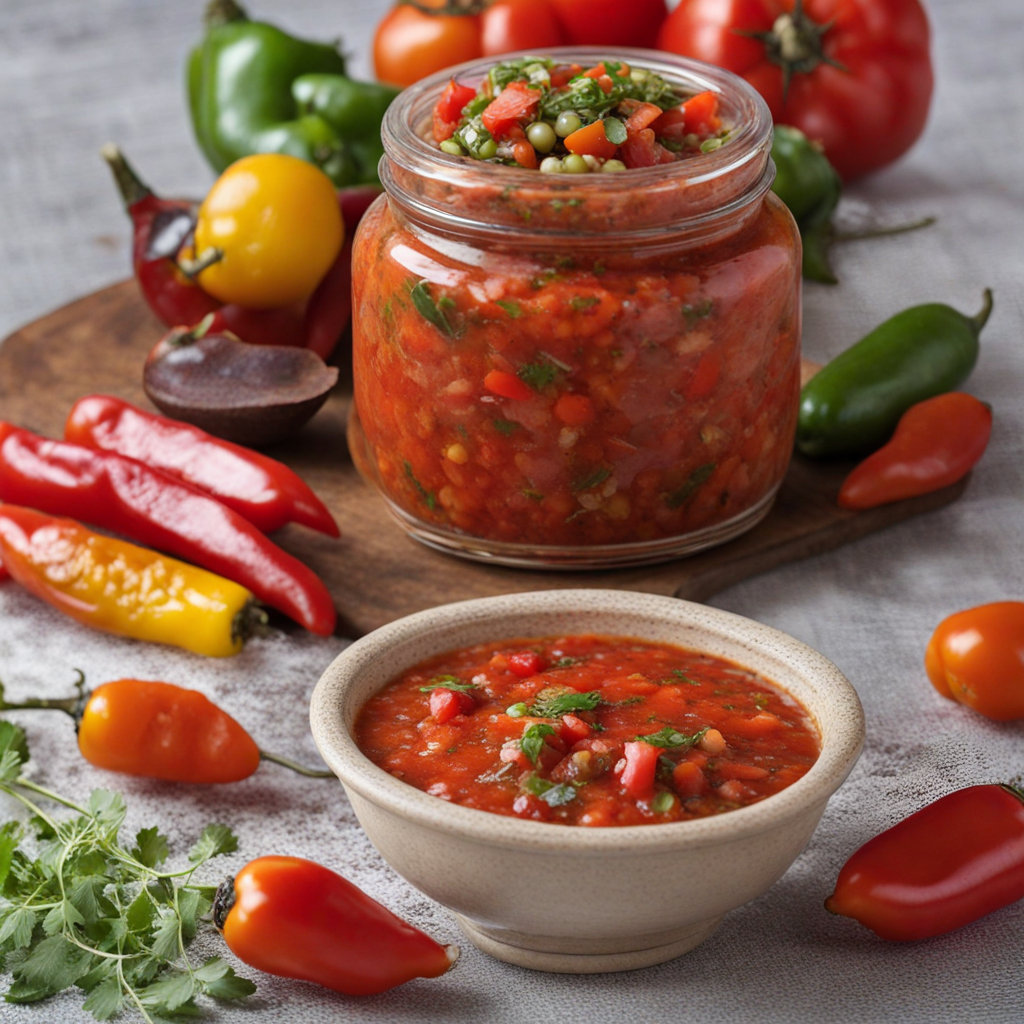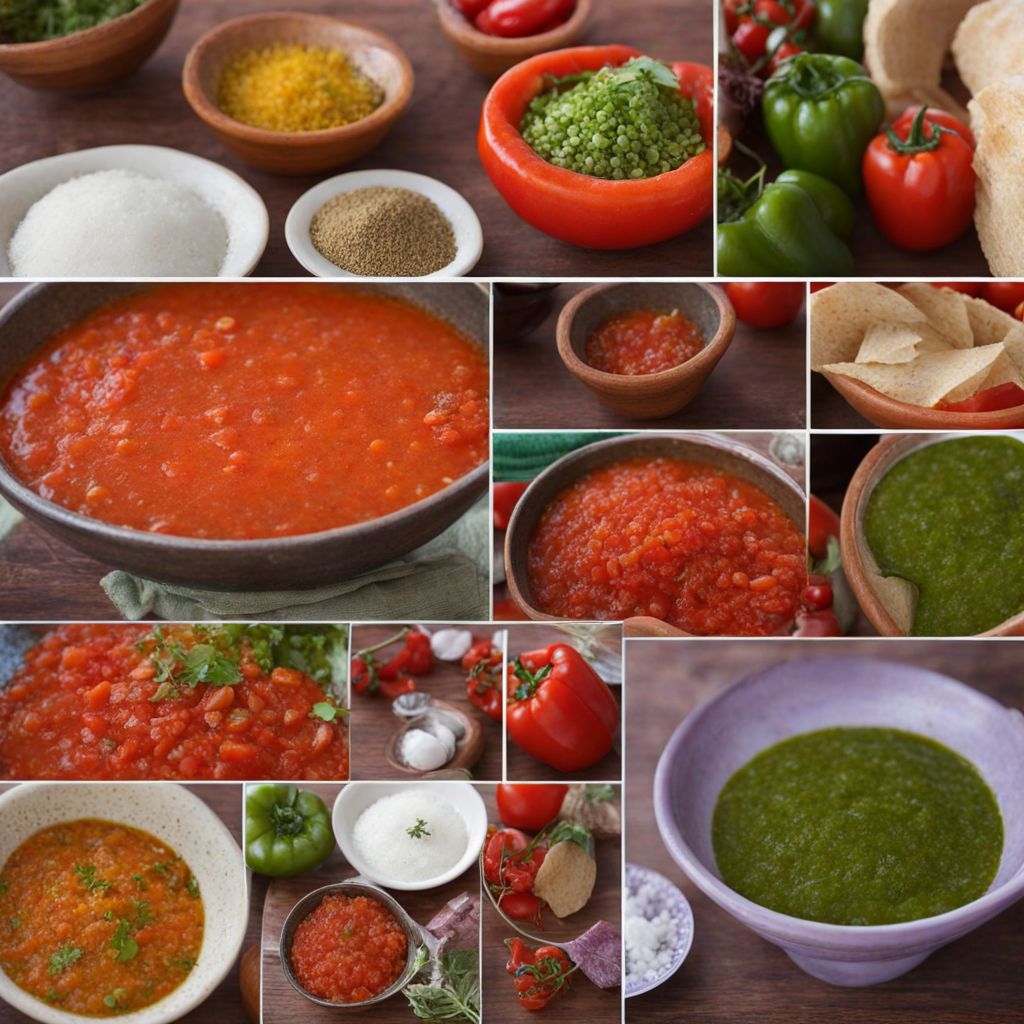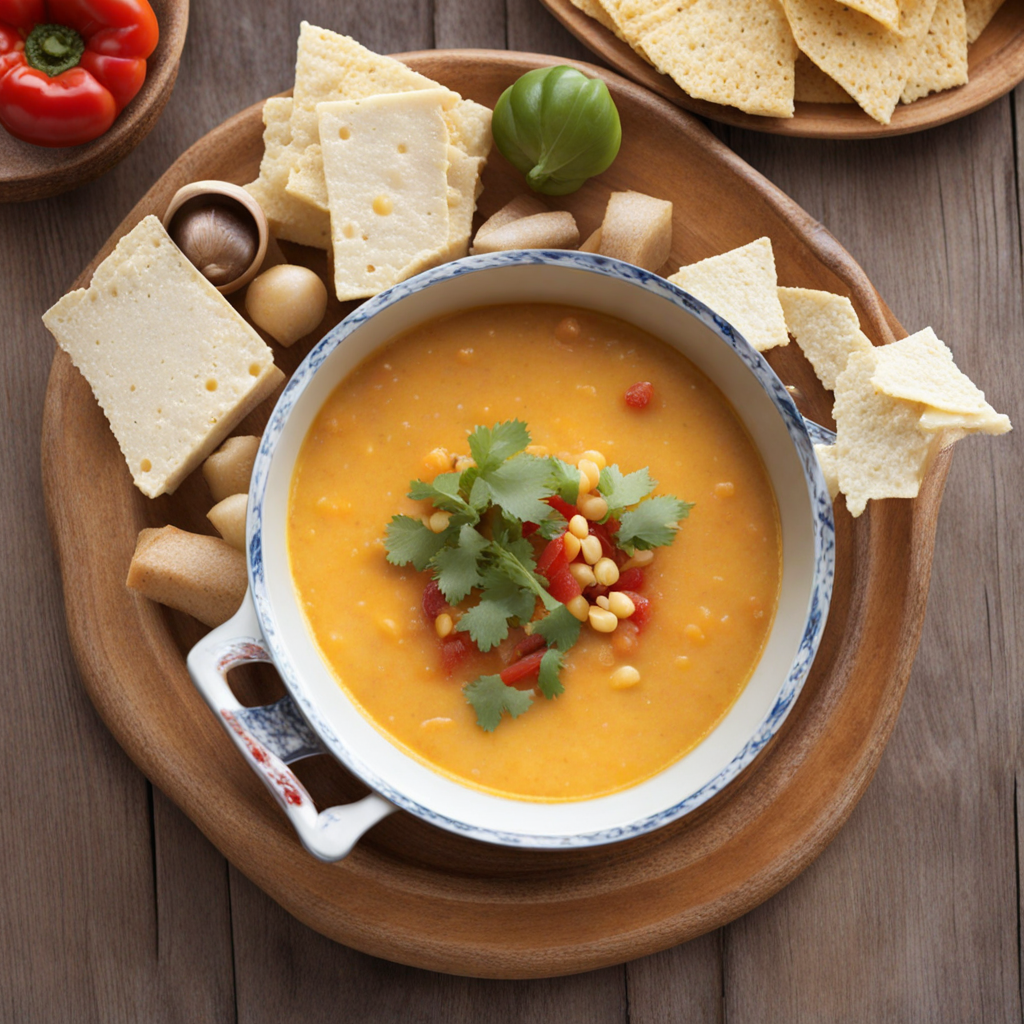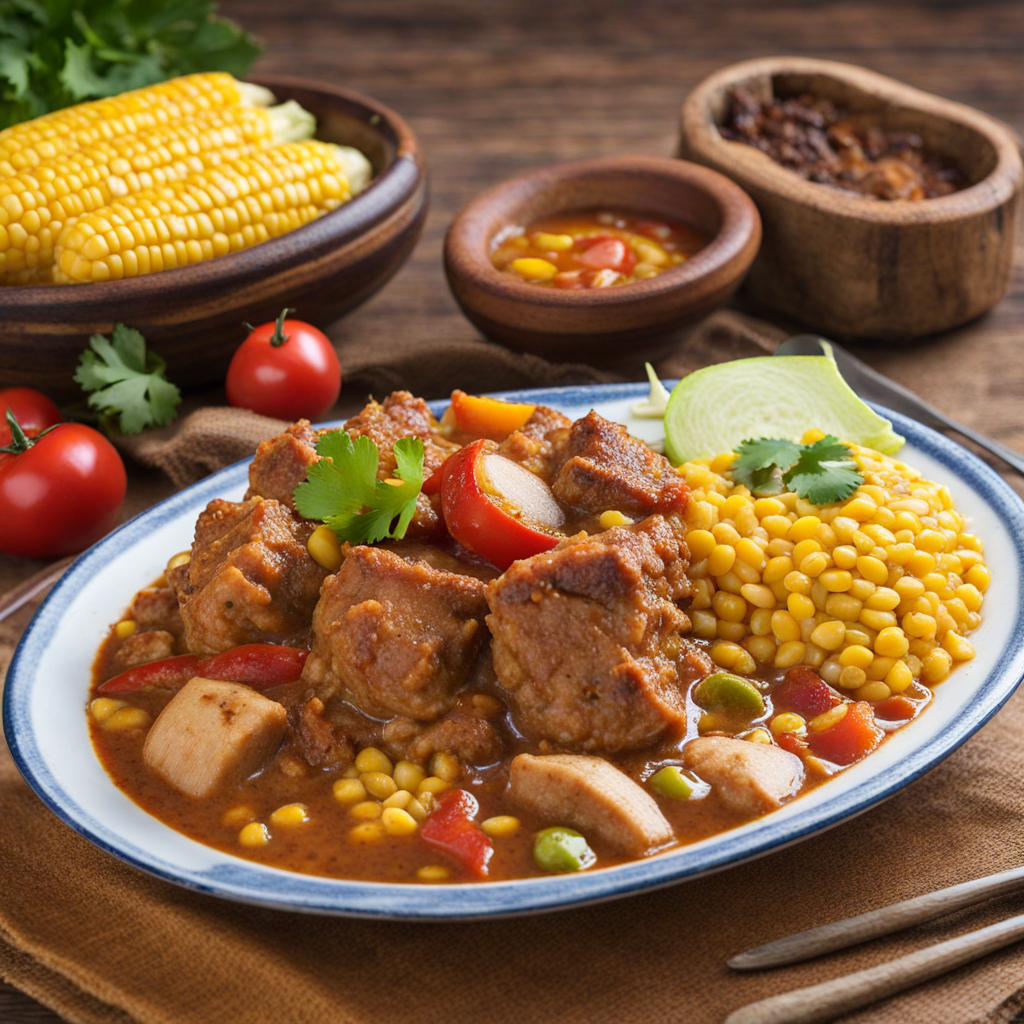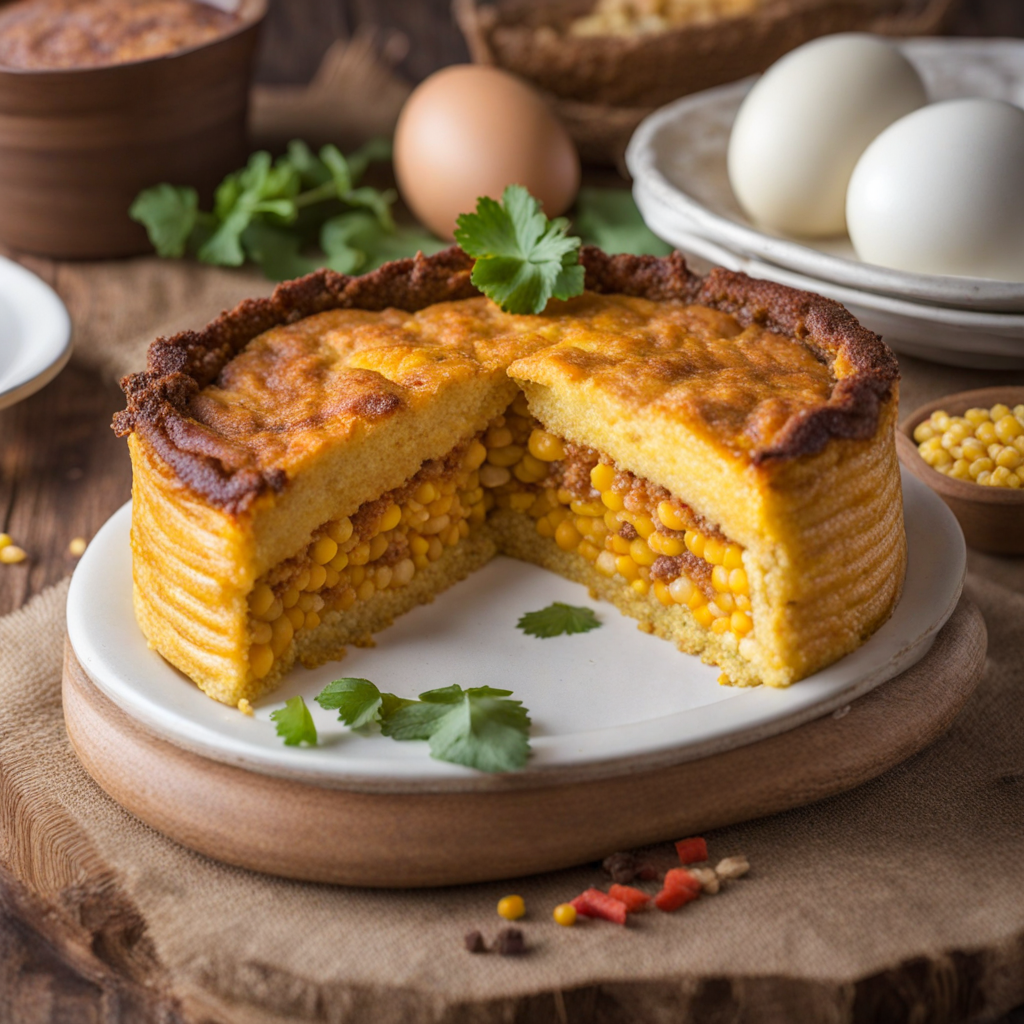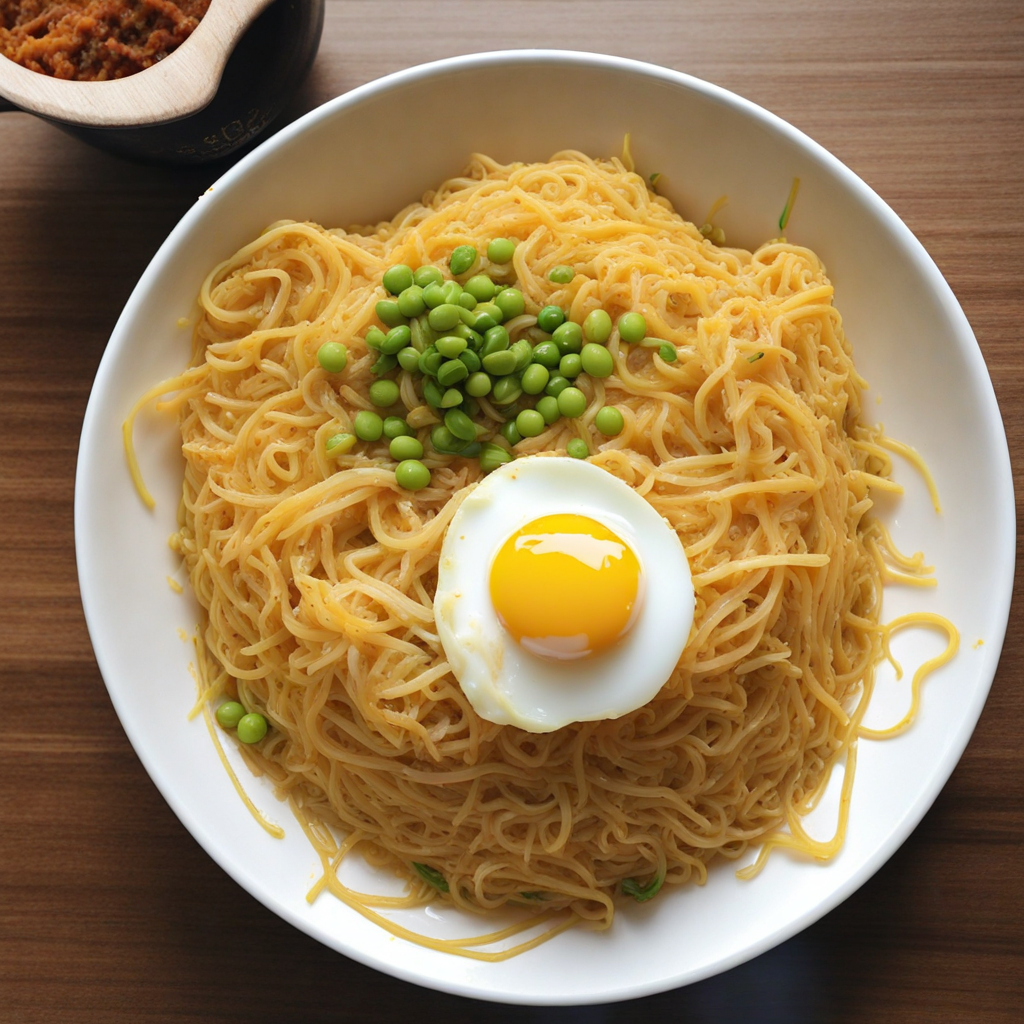Llajua
Llajua is a vibrant Bolivian condiment that embodies the rich flavors and culinary traditions of the Andes. This spicy sauce is typically made from a blend of fresh tomatoes, roasted locoto peppers, and aromatic herbs such as cilantro. The freshness of the ingredients is key to its flavor profile, with the tomatoes providing a sweet and tangy base and the locoto peppers delivering a robust heat that lingers on the palate. Each family may have its own variation, incorporating additional ingredients such as garlic or onion, which further enhances its complexity and depth. Traditionally, llajua is served alongside a variety of dishes, such as salteñas (savory pastries filled with meat and vegetables), grilled meats, or even as a dip for crispy yucca fries. Its versatility makes it a staple in Bolivian cuisine, and it serves not only as a flavor enhancer but also as a way to bring people together at the dining table. The bright red color of the sauce adds an appealing visual element, inviting you to dive into an authentic Bolivian meal. For those looking to explore new tastes, llajua offers an exciting combination of heat, acidity, and freshness that can elevate any dish. Its unique blend of flavors can awaken your senses and provide a delightful contrast to the rich and hearty foods it's paired with. Whether you’re drizzling it over grilled meats or using it as a zesty dip, llajua is a culinary adventure that showcases the bold spirit of Bolivian gastronomy.
How It Became This Dish
The Story of Llajua: Bolivia's Spicy Soul #### Origins and Ingredients Llajua, a vibrant and spicy sauce, is a staple of Bolivian cuisine, particularly celebrated in the Andean region. Its origins can be traced back to the indigenous peoples of the area, who have long used local ingredients to create flavorful condiments. The basic components of llajua are tomatoes, locoto peppers (a type of Bolivian chili), and cilantro, though recipes can vary widely depending on regional preferences and family traditions. The name "llajua" itself is derived from the Aymara word for "sauce" or "dip," reflecting its deep roots in indigenous culinary practices. The locoto pepper, which is native to the Andean highlands, is a defining ingredient of llajua. This small, round chili packs a significant heat, often compared to jalapeños but with a unique flavor profile that includes hints of sweetness and smokiness. The blend of locoto with the freshness of tomatoes and the aromatic qualities of cilantro results in a sauce that is both piquant and refreshing, capable of elevating a variety of dishes. #### Cultural Significance In Bolivia, food is not merely sustenance; it is a reflection of identity, community, and cultural heritage. Llajua embodies this sentiment, serving as a bridge between the past and present. Traditionally served with a range of dishes—from grilled meats and salteñas (Bolivian pastries) to empanadas and even as a complement to street food—llajua is more than just a condiment; it is a symbol of hospitality and togetherness. The preparation and sharing of llajua often occur during communal gatherings, festivals, and family meals, reinforcing social bonds. In many households, the recipe for llajua is passed down through generations, each family adding its own twist. This oral tradition not only preserves the recipe but also strengthens familial ties and cultural identity. #### Historical Context The history of llajua is interwoven with Bolivia's rich tapestry of cultural influences. The arrival of the Spanish in the 16th century introduced new ingredients and cooking techniques, which transformed indigenous culinary practices. However, despite these external influences, traditional Andean cooking methods remained resilient. Llajua, with its indigenous roots, represents a fusion of pre-Columbian and colonial culinary traditions. Over the centuries, as Bolivia underwent significant political and social changes, so too did its food culture. The emergence of a national identity in the 19th century saw a renewed interest in traditional foods, and llajua emerged as a symbol of Bolivian pride. It became a culinary ambassador, representing the diverse flavors and cultural heritage of the nation on the global stage. #### Variations Across Regions Llajua's versatility is a testament to Bolivia's diverse geography and cultural influences. Different regions have developed their own versions of llajua, each showcasing local ingredients and preferences. In the highlands, llajua may be thicker and spicier, while in the valleys, it may be lighter and more tomato-forward. Some variations include additional ingredients like garlic, onion, or even fruit like mango and peach, enhancing the sauce's complexity and flavor. In Cochabamba, one of the culinary capitals of Bolivia, llajua is often served with a variety of meats, particularly grilled sausages known as "chorizo." The region is renowned for its diverse agricultural products, which further enrich the llajua experience. Similarly, in La Paz, the high-altitude capital, llajua is commonly paired with the iconic dish "pique macho," a hearty mix of beef, sausage, fries, and peppers, highlighting how this sauce complements the robust flavors of Bolivian fare. #### Modern Adaptations and Global Recognition As Bolivia has gained international attention for its culinary offerings, llajua has made its way onto global menus. Chefs and food enthusiasts have begun to recognize the unique flavor profile of this sauce, incorporating it into fusion dishes and modern interpretations of traditional recipes. It has become a popular condiment in Bolivian restaurants outside the country, where it is often served alongside grilled meats and other Latin American dishes. Social media has played a crucial role in showcasing llajua to a wider audience. Food bloggers and culinary influencers share their experiences trying llajua, often highlighting its homemade versions and inviting their followers to explore Bolivian cuisine. This exposure has fostered a renewed interest in traditional foods, sparking conversations about cultural heritage and the importance of preserving culinary traditions. #### The Future of Llajua As Bolivia continues to embrace its culinary heritage, the future of llajua looks promising. The growing global interest in authentic and diverse food cultures presents an opportunity for Bolivian cuisine to flourish. Efforts to promote local ingredients and sustainable farming practices will also ensure that the traditional methods of preparing llajua remain intact. Moreover, as Bolivians in the diaspora seek to reconnect with their roots, llajua serves as a flavorful reminder of home. Families are increasingly sharing their recipes and techniques, ensuring that future generations will appreciate and celebrate this emblematic sauce. #### Conclusion Llajua is more than just a sauce; it is a reflection of Bolivia's history, culture, and identity. From its indigenous roots to its modern adaptations, llajua has evolved while remaining deeply connected to its origins. As Bolivia navigates the complexities of globalization and cultural exchange, llajua stands as a testament to the power of food in bringing people together, preserving traditions, and celebrating the rich flavors of a nation. The journey of llajua is a reminder that food is not just about taste; it is about storytelling, community, and the enduring spirit of a people.
You may like
Discover local flavors from Bolivia


